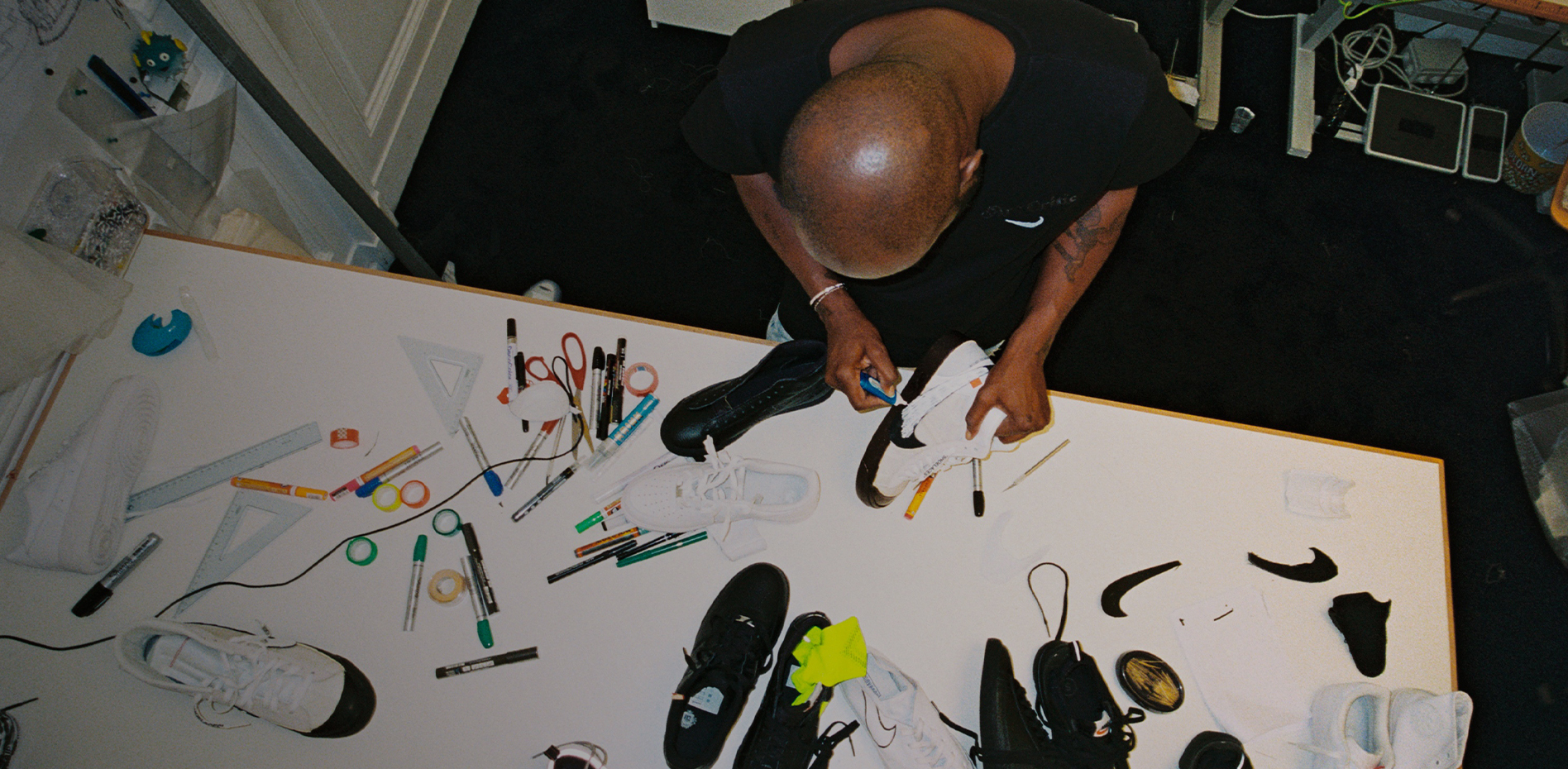After two years battling a rare form of cancer, on November 28, 2021, Virgil Abloh passed away at the age of 41. A leader in the world of design, Abloh was the CEO and founder of Off-White and the artistic director of Louis Vuitton’s menswear collection. This article was first published on August 9, 2019.
Not quite an architect and not quite a fashion designer, Virgil Abloh is both and a lot of stuff in between. He is a perpetual student, constantly questioning, tinkering and interrupting. He not only speaks in quotes; he lives in them. In this abode lies an expanse of ironies that pose just about every question about things that are embedded, undeniable and obvious. The complacency of others is the source of Virgil Abloh’s wizardry.
Architizer spoke with the designer to gain a better understanding of his creative approach and the underlying philosophy behind his work.
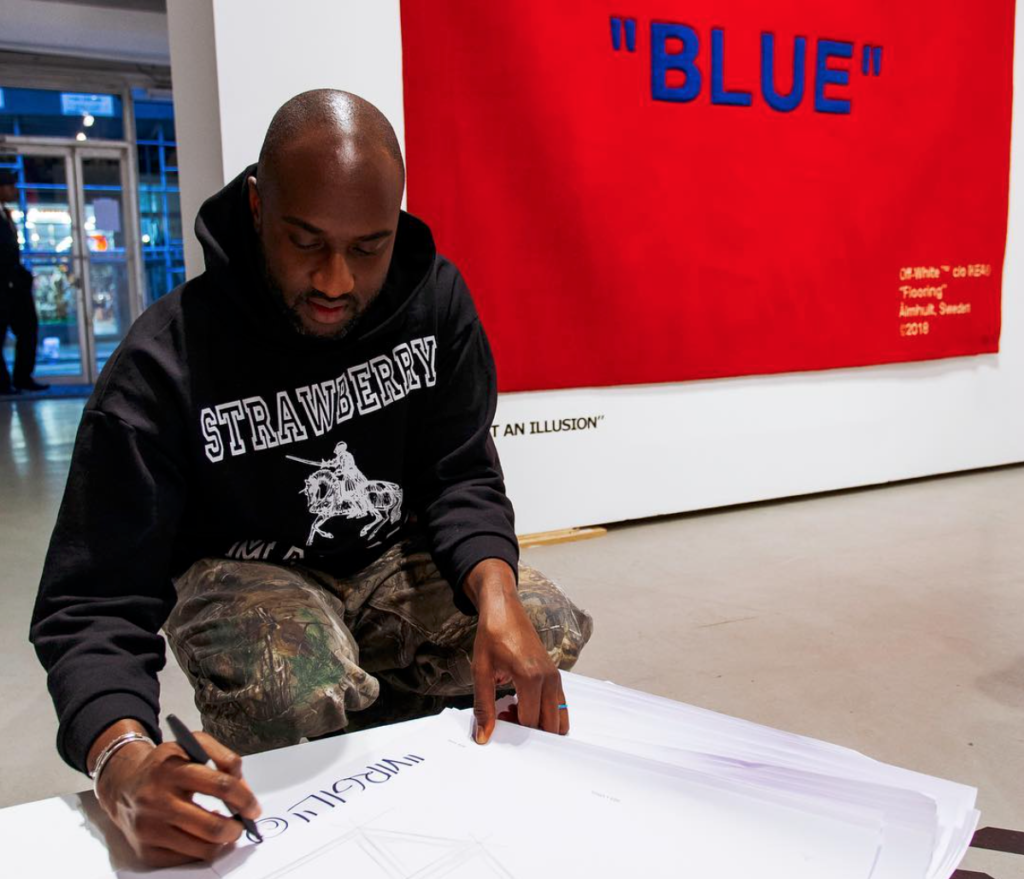
Virgil Abloh revealing prototypes from his IKEA collaboration entitled “Markerad”
You could say Abloh is, first and foremost, a fashion designer. He is, after all, the founder of the Milan-based label Off-White and the artistic director of Louis Vuitton’s men’s wear collection. However, the entrepreneur’s educational history reveals other expertise: He holds degrees in civil engineering and architecture, from the University of Wisconsin–Madison and the Illinois Institute of Technology respectively.
Since graduating in 2006, Abloh’s achievements are as diverse as they are plentiful: He has stood as creative director at Kanye West’s “Donda” creative agency, and has collaborated with the likes of IKEA, Nike, Pioneer DJ, Vitra and audio engineer, Devon Turnbull. The list goes on: He was nominated for a Grammy for the art direction of Jay-Z and Kanye West’s Watch the Throne album, has had a series of exhibitions at the Gagosian galleries with artist Takashi Murakami, has lectured at Harvard and Columbia, and DJs at venues and festivals around the world.
While this seems long winded, it’s hard to think of a concise way to accurately encapsulate all that Virgil Abloh truly does. Scanning his resume, one could infer that he’s a jack of all trades. However, looking closer at his educational background, collaborations and aesthetic, it can be surmised that Abloh is simply a jack of a single trade, a master of one — ideation itself.
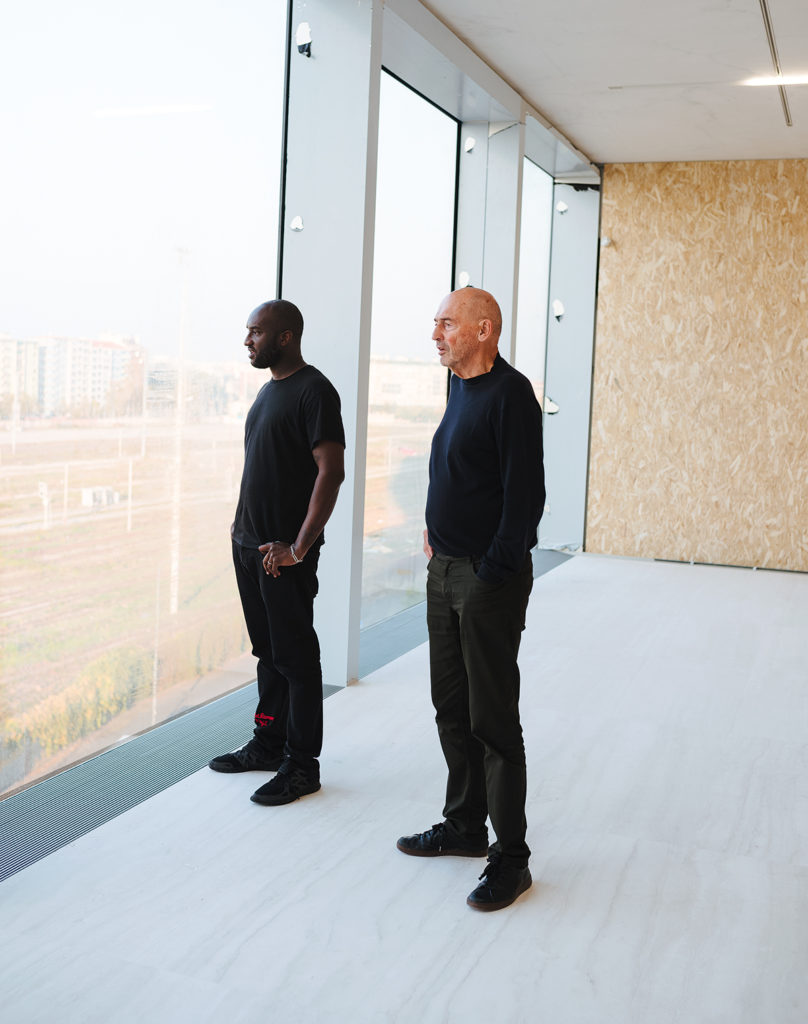
Virgil Abloh and architect Rem Koolhaas come together to talk; image via Piotr Niepsuj, courtesy of BURO.
“To me, it’s not so much about mastering a field or a form,” says Abloh. “It’s more about creating something that doesn’t already exist, or taking something that does and making it new. Sometimes that happens with the help of a partner. If I can bring an ounce of a new idea to something, I say that’s a win.”
The common denominator throughout his career, though, has been architecture. Design principles originating in the built environment have been taken by Abloh and deliberately cast across a wide range of creations. This was clearly apparent at his career-spanning retrospective exhibit, “Virgil Abloh: ‘Figures of Speech,’” at the Museum of Contemporary Art in Chicago (MCA). His frequent use of transparency, patterns and graphics derived from common urban signage, and the centrality of prototyping in his creative process speaks to Abloh’s training in modern architecture.
The designer reflects: “A lot of what I know and the way I approach things comes from what I learned at OMA under Rem Koolhaas. Back then, they were creating in a way that looked beyond buildings as places, but as affecting the landscape of culture through this lens of architecture.”
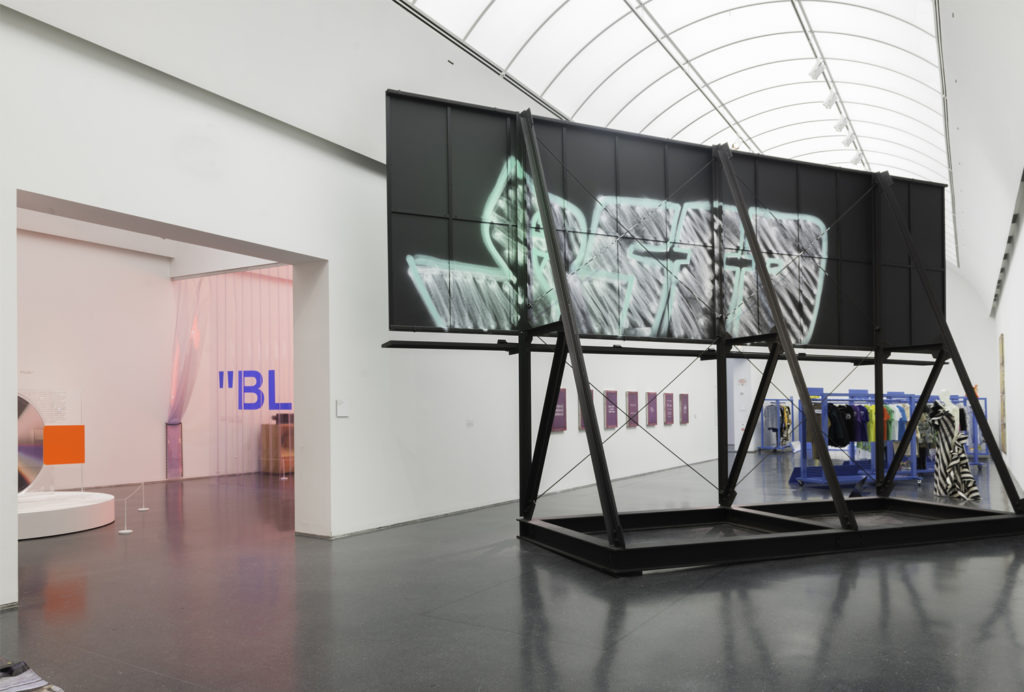
Section of “Virgil Abloh: ‘Figures of Speech’” exhibit. Koolhaas’ research and design studio, AMO, teamed up with the MCA to formulate the design of Abloh’s exhibit. Image via Nathan Keay, courtesy of MCA Chicago
Nodding to his admiration for Modernist German architect Ludwig Mies van der Rohe, the functionality of Abloh’s work is readily apparent. For him, design is as much about the process as it is about the final product, which he achieves by deconstructing established norms, calling attention to what is there, and questioning it. At the end of this process lies something new that can be reinterpreted and ultimately inform its user.
For example, his work with audio company Pioneer DJ, features a transparent version of his preferred turntables that reveals the device’s internal parts, now a “piece” at the MCA. His collaboration with Swiss furniture company, Vitra, presents a brick or “ceramic block” whose use has been readapted into a household accessory. For Abloh, creating something new comes down to surveying and refining, which can explain the high volume of projects he’s constantly undertaking.
“I work at a fiery pace. I work at a 3% approach. I’m only interested in editing an idea or a concept by 3% from the initial concept,” explains Abloh. “A lot of the time, especially when we were working on TWENTYTHIRTYFIVE with Vitra, I would stop and say ‘do we need this?’, ‘will we use this?’ or ‘does this have a reason to exist?’ If the answer to either is no, well then, there’s your answer.”

Pioneer DJ c/o Virgil Abloh turntable; image via Pioneer DJ
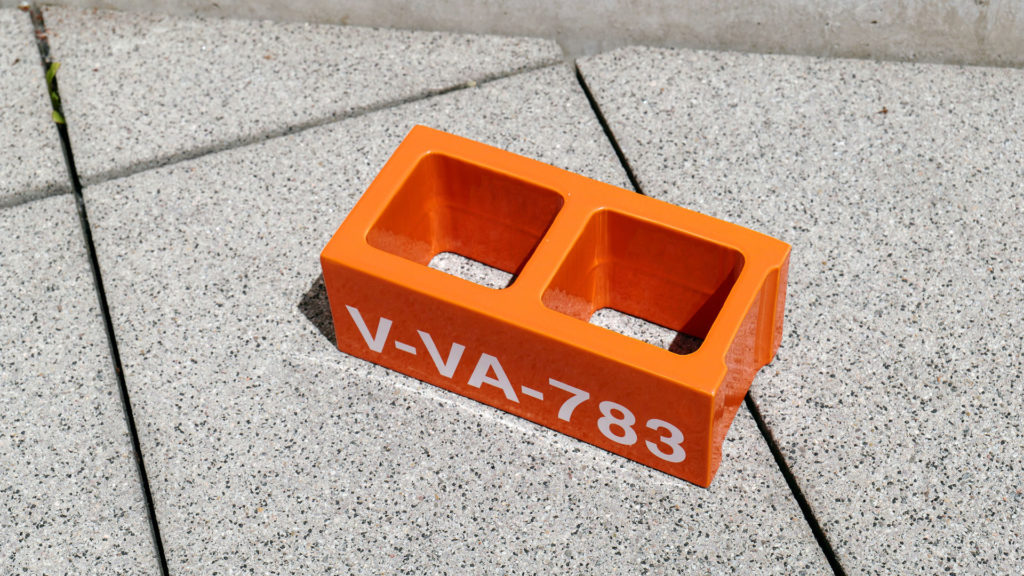
Vitra c/o Virgil Abloh “Ceramic Block”, image via Vitra
Abloh’s work feeds off contemporary pop culture — the stuff that circulates on Twitter, Instagram and Tumblr, produced and consumed by the kids who are dominating today’s consumer base. Whether it’s calculated or organic, he has tapped into a growing cultural realm, developing a strong foothold in millennial tastes — so strong to the point where a single word in quotes, written across the bottom of a shoe, can raise its value by 500%. With this power, he’s been able to pump in questions and ideas that are traditionally inaccessible to young people, especially those of color.
Things like haute-couture, architecture and luxury furniture are conventionally exclusive worlds that a black kid from the south side of Chicago would typically be barred from, if not completely oblivious to. Standing as Louis Vuitton’s first African-American artistic director, Abloh is a historically rare figure in the fashion industry. It has allowed him to bridge the gap between what he’s coined as “tourists” and “purists”: those that consume and those within the “exalted” realm of producing, respectively. He creates under both of these guises, allowing those interested a chance to peek in, learn and ultimately influence. Abloh’s career has been unapologetic and disruptive, supplying tool kits for others to use along the way.
“Your first ‘No’ will be the best thing that happens. Better ideas will come from there,” says Abloh.
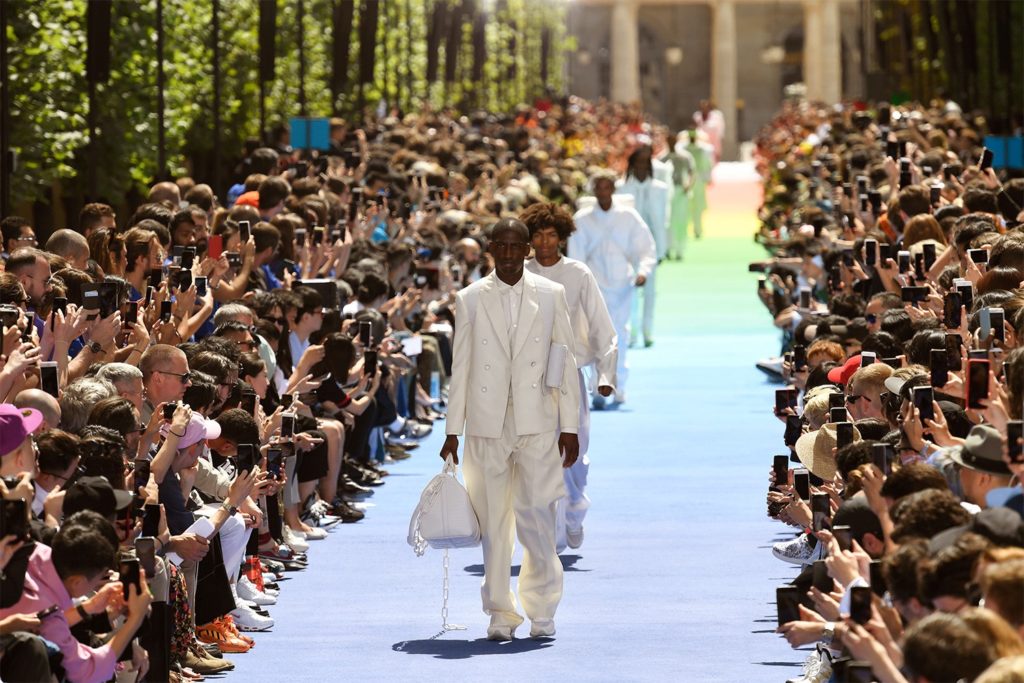
Shot from Louis Vuitton’s SS19 Men’s Show; image via Bertrand Guay courtesy of Getty Images
From blasting Migos towards an audience brimming with everyone’s favorite rappers to employing primarily models of color, Virgil Abloh has deconstructed convention in order to critique the establishment. He’s surveyed, refined and informed, making something new each time; a method continuously present ever since his time buried in engineering coursework and working in the architectural studio. Just like his turntables, Abloh takes a 3% approach to making the fashion world more transparent and accessible to a wider audience, giving more people a chance to spin.
We look forward to seeing what mountains Virgil Abloh chooses to climb next. Asked if a master planned city designed in tandem with Kanye West is within the realm of possibility, Abloh is characteristically open to ideas:
“That’s a good question.”
Architects: Showcase your next project through Architizer and sign up for our inspirational newsletter.
